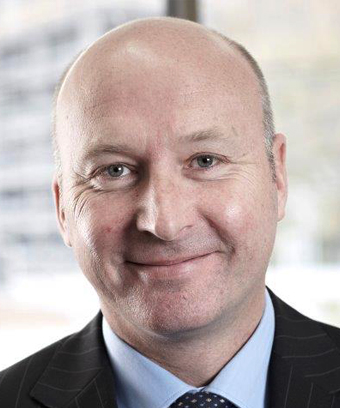Death and taxes: What you need to know
 What do you do if you and your spouse have a self-managed super fund (SMSF) and want to ensure that your superannuation entitlements get paid to your preferred beneficiary – your spouse or another – if you pass away?
What do you do if you and your spouse have a self-managed super fund (SMSF) and want to ensure that your superannuation entitlements get paid to your preferred beneficiary – your spouse or another – if you pass away?

Blogger: Henry Walachowski, partner, Marin Accountants
To continue reading the rest of this article, please log in.
Create free account to get unlimited news articles and more!
You should take note of two important areas where the rules have recently got blurry. Recent court decisions have left the status of binding death benefit nominations (BDBN) and pension reversions unclear, although the outcome of the cases provide some useful lessons on making sure these aspects of your SMSF are watertight, should one spouse pass away.
Binding death benefit nominations
In essence, this aspect of a SMSF should be fairly straightforward. Each spouse makes a BDBN to nominate their partner for superannuation payments, should one of them pass away.
However, this can become messy when other family members are involved as trustees or beneficiaries of the SMSF. This can happen particularly in ‘blended family’ situations, where there might be children from an earlier relationship or marriage.
Things get even trickier when the will of the deceased spouse contradicts the existing superannuation arrangements, or goes against the provisions of the BDBN. The deceased’s will does not supersede their superannuation entitlements.
So what can you do to ensure that there is clarity in such situations?
Some suggestions:
• Make sure that your SMSF trust deed is current and contains appropriate powers regarding the nomination of beneficiaries, particularly in relation to using reversionary pension nominations, BDBNs, Death Benefit Rules or some other provision. If not, make sure you get the trust deed updated
• Take care to have clear, consistent instructions in all your SMSF provisions and in your and your spouse’s wills, to ensure the directions in all documents are complementary rather than contradictory
• Understand the rules set down in the SMSF trust deed for beneficiary nominations and make sure that you and your advisors comply with these when finalising the documents
As a last resort, you might want to consider using a Death Benefit Guardian to ensure objectivity after one spouse’s death. The guardian takes over the decision-making from the surviving spouse when they will not be benefiting following the death of their partner. Effectively, with a properly appointed Death Benefit Guardian, death benefits cannot be paid other than in accordance with the terms of the death benefits provisions mentioned previously, without the consent of the Death Benefit Guardian.
Pension reversions
Another area to consider is pension reversions, where one member of a SMSF can direct the fund trustee to continue paying his/her pension to a nominated dependant on their death. This can be done as long as:
• the trust deed of the fund permits the trustee to accept such instructions
• the nomination is correctly completed and accepted by the trustee
• the nominated recipient(s) are permitted under the legislation to receive their entitlement to death benefits in the form of an income stream
The document used by a fund member to nominate a dependant to succeed them in receiving the pension is generally known as an ‘automatic pension reversion nomination’. This enables the pension to be paid to a spouse with very little activity required on the part of the new recipient.
However, recent legislation and case law changes suggest that a reversion might not be necessary in many of these situations. There are many tax implications inherent in a pension reversion – while there are some situations when a pension reversion might be particularly useful as a tax exemption strategy (eg maximising the tax free component of a life insurance pay out), there are many other situations when it should not be considered as a tool to achieve tax savings.
It’s important to remember that timing is critical in completing an automatic reversionary nomination. The safest path to take is that the automatic reversion nomination should be provided to the SMSF trustee at the time of commencement of the pension.
If the beneficiary needs to be changed, the pension should be stopped and recommenced (reset), with a new automatic pension reversionary nomination in place at the (re)start.
It is also absolutely crucial that the trust deed is checked to determine whether it allows the death benefits to be paid in this way, and permits the SMSF trustee to accept the automatic reversion nomination. If the trust deed does not contain those powers, it should be updated.
Bottom line? As with all superannuation issues, it’s best to check with your accountant to see whether your SMSF will stand up to these ‘death and taxes’ issues. If it needs work to pass this test, your accountant will be the best advisor to help in this way.
About Henry Walachowski
Henry Walachowski is a partner at Marin Accountants, a firm specialising in accounting and business advice for SME businesses and high net worth individuals. You can contact Henry on 03 9645 9229 or by email at [email protected]


